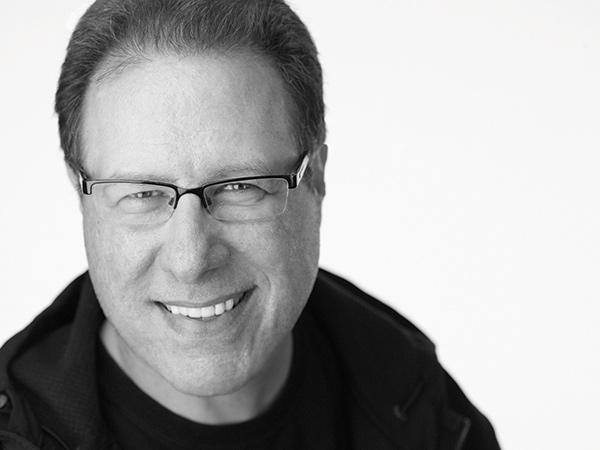Ask a Pro: Scott Kelby Answers Your Photography Questions

Q. Now that Adobe has announced a new cloud version of Lightroom, I’m not sure which one I should be using. Should I switch to this new version?
A. I hate to give you one of those “it depends” answers, but “it depends.” The new version, named Lightroom CC, stores everything in Adobe’s cloud, which means you have to upload all your images to the cloud. If you shoot a lot of images in Raw, then it can get expensive since you are charged for the storage. Adobe charges $10 per month per terabyte. While that sounds reasonable, let’s dig a little deeper. A buddy of mine just came back from vacation, and he shot 1.4TB of Raw images in two weeks. To store only that vacation would run him $240 per year—if he just used this new version of Lightroom and 2TB of storage. However, he also uses Photoshop, so the photographer’s bundle costs him $10 a month, but the $20 for the 2TB of storage takes his yearly cost to $360—just to work on his vacation photos. Now, if he shot in JPEG high-quality mode, he could probably get away with just that 1TB for quite a while, so it would only be $240 a year for Lightroom CC, Classic, and Photoshop CC with 1TB of storage. If he could give up Photoshop, then it would go back down to the $120 he pays now for Lightroom Classic (the version we’ve all been using for the past 10 years). So, as you can see, a lot of the decision depends on how much you shoot and how much storage you need.
Q. For my bird photography I am using a Canon 7D Mark II with a Tamron 150-600mm zoom and am quite satisfied. I’ve tried several other combinations but this one works best for me in terms of portability, image quality, frames per second, and zoom length. I also enlarge my best images to Super B (13x19 inches). Because cropping in bird pictures is almost always necessary, is there any other combination of camera and lens that might be better, such as a Canon 5D Mark IV?
A. The Canon EOS 7D Mark II has 20.2 megapixels, and the 5D Mark IV has 10 more megapixels at 30.4. While you would be able to crop closer, you’d be giving up some important things in terms of wildlife photography. First, you’re already shooting on a crop sensor camera, so you’re 1.6x closer versus a full-frame body like the 5D Mark IV. You’ll miss that closer range, and I don’t think the extra 10 megapixels will make the difference. You’ll also be giving up that 10 frames per second, which is ideal for wildlife photography. In fact, while you’d be gaining a few things (like megapixels), you’d be giving up more than you’d be getting for what you’re shooting. In short, I think you’ve got the right body/lens combination. The grass isn’t always greener. :)
Q. What makes one monolight better than another?
A. I’ve always made the joke that a “bright flash of light is a bright flash of light,” so theoretically they would be the same. One thing that is important, though, is consistency of that light. Cheaper strobes (monolights) often don’t give you the same consistent amount of power flash after flash, so your exposure changes a bit from shot to shot, which I can tell you from experience is no fun come post-processing time. The other thing is usability. I’ve used some cheap strobes that were so clunky, or complicated to work with, that it literally made me not want to use them at all. So much so, in fact, that I sold all my cheap monolights and never looked back. What makes one better than another can range from the build, the consistency of power, the design of the wireless remote, the accessories and softboxes they’re built to use, to the industrial design. Like anything cheap, you get what you pay for.
Q. My workhorse, go-to lens is Canon’s EF 24-70mm f/2.8L II USM. However, filters, particularly polarizers, are determined to remain attached to my lens no matter what I do. I’ve tried not squeezing so hard when trying to remove the filter and using a cleaning cloth or wide rubber band for better grip. I’ve even tried different brands of filters, but they all want to stay attached. Any suggestions in your bag of tricks?
A. Those filters shouldn’t come on and off easily, so it sounds to me like your barrel is bent, even though to the eye it looks perfectly round—you probably don’t even know what happened to make it bent. It’s time to send your 24-70mm to Canon for repair and see if their wizards can get that barrel back in shape for you.
Q. I’ve read in two places that memory cards for DSLRs “wear out” and should be replaced periodically. Is this just an urban myth? The cards are just a jillion tiny simple transistors, so why should they “wear out”? I know that cards sometimes fail due to faults with the camera, or lack of formatting before use, or mishandling, but is this the same as “wearing out” and needing to be replaced periodically? Also, I’ve read that it is risky to “backfill cards,” meaning to erase a number of pictures and keep recording on the card, as opposed to filling the card and then formatting it. Is this true?
A. For whatever reason, memory cards do “fail” and I’ve had it happen to me a number of times over the years. If I’m lucky enough to recover the images from a failed card, I would never risk shooting to that same card again—it goes in the trash. So, yes, for whatever reason cards die. To your question about them needing to be replaced periodically: I use the same cards again and again, week after week, and write again and again to the same cards. I don’t ever replace a card until it does actually “die” on me—that’s my cue to buy a new card. As for backfilling, I hope it isn’t risky as I’ve been doing it for many years.
Scott Kelby is a photographer, Photoshop Guy, award-winning author of more than 50 books, and CEO of KelbyOne, an online education community dedicated to helping photographers take the kinds of images they’ve always dreamed of. You can learn more about Scott at his daily blog (scottkelby.com), or follow him on Twitter: @scottkelby.
Editor’s Note: Ask a Pro is a Q&A column from professional photographer, writer, and educator Scott Kelby. Scott is here to answer all your photography-related questions, so if you have something you’d like to know, e-mail him at editorial@shutterbug.com (with “For Scott Kelby” as the subject line) and your query could be featured in the next edition of Ask a Pro.
















































